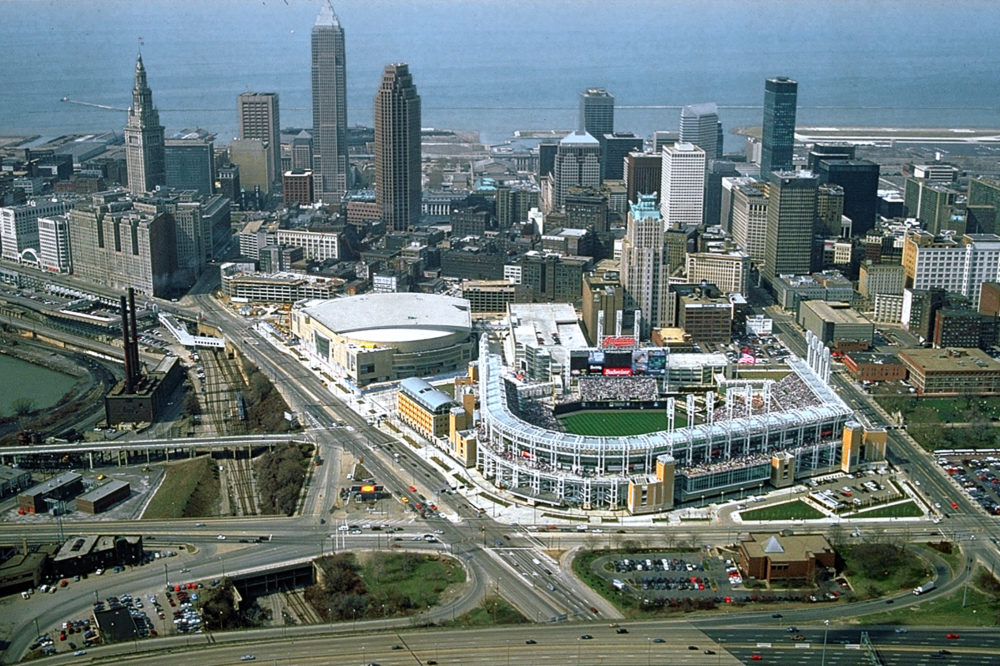
Cleveland Gateway
Cleveland, OH
 Sasaki
Sasaki
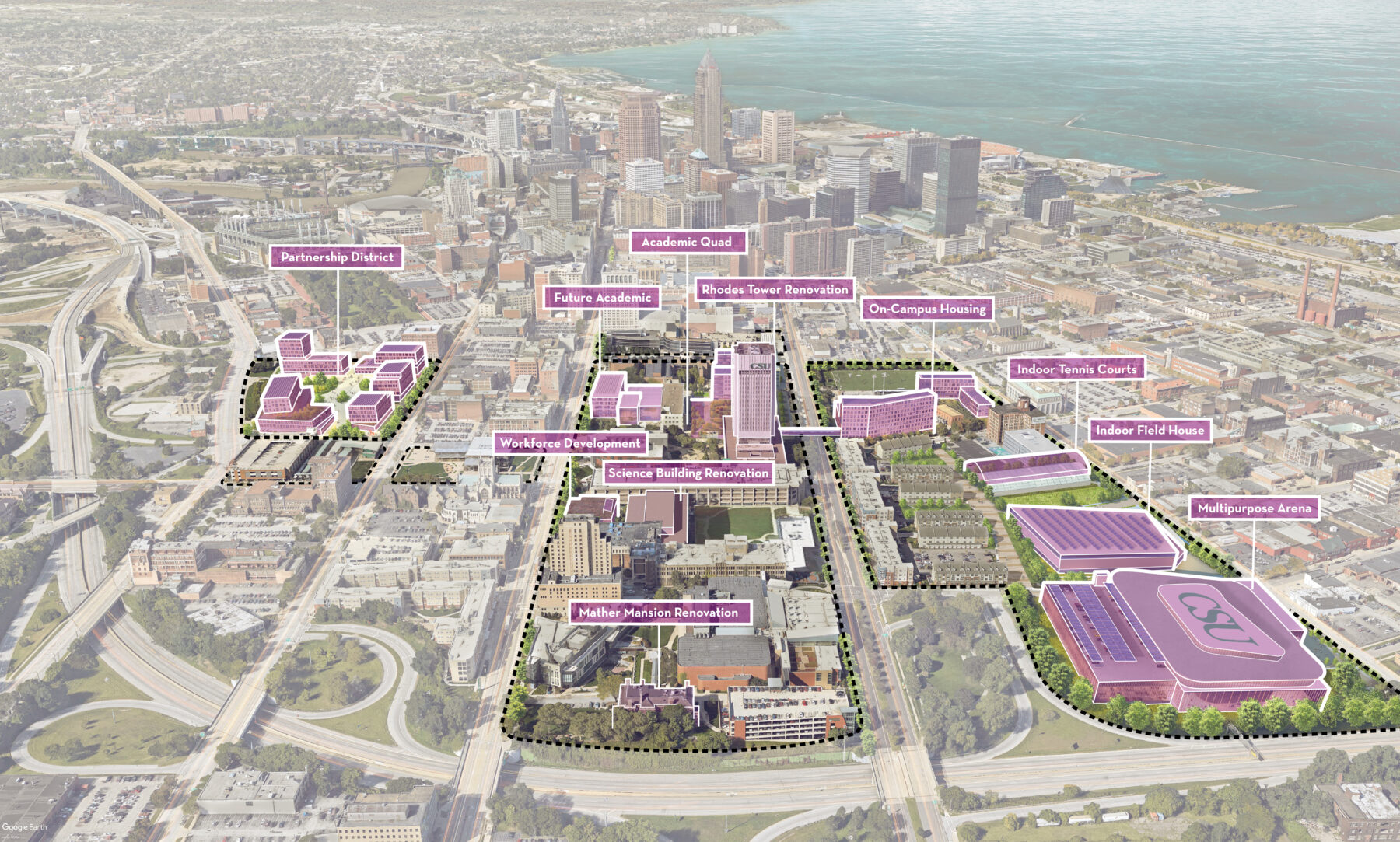
In 2023, Sasaki completed a master plan for Cleveland State University (CSU) located in the heart of downtown Cleveland. Within the context of the University’s strategic plan, CSU 2.0, the new master plan serves as both an inspirational vision for the future of the institution as well as a blueprint for the campus’s physical footprint over the next 10 years.
The plan identifies a potential path to strengthen the school’s urban identity, create a compact, mixed-use campus core, and continue to serve as an anchor institution impacting the local community and beyond.
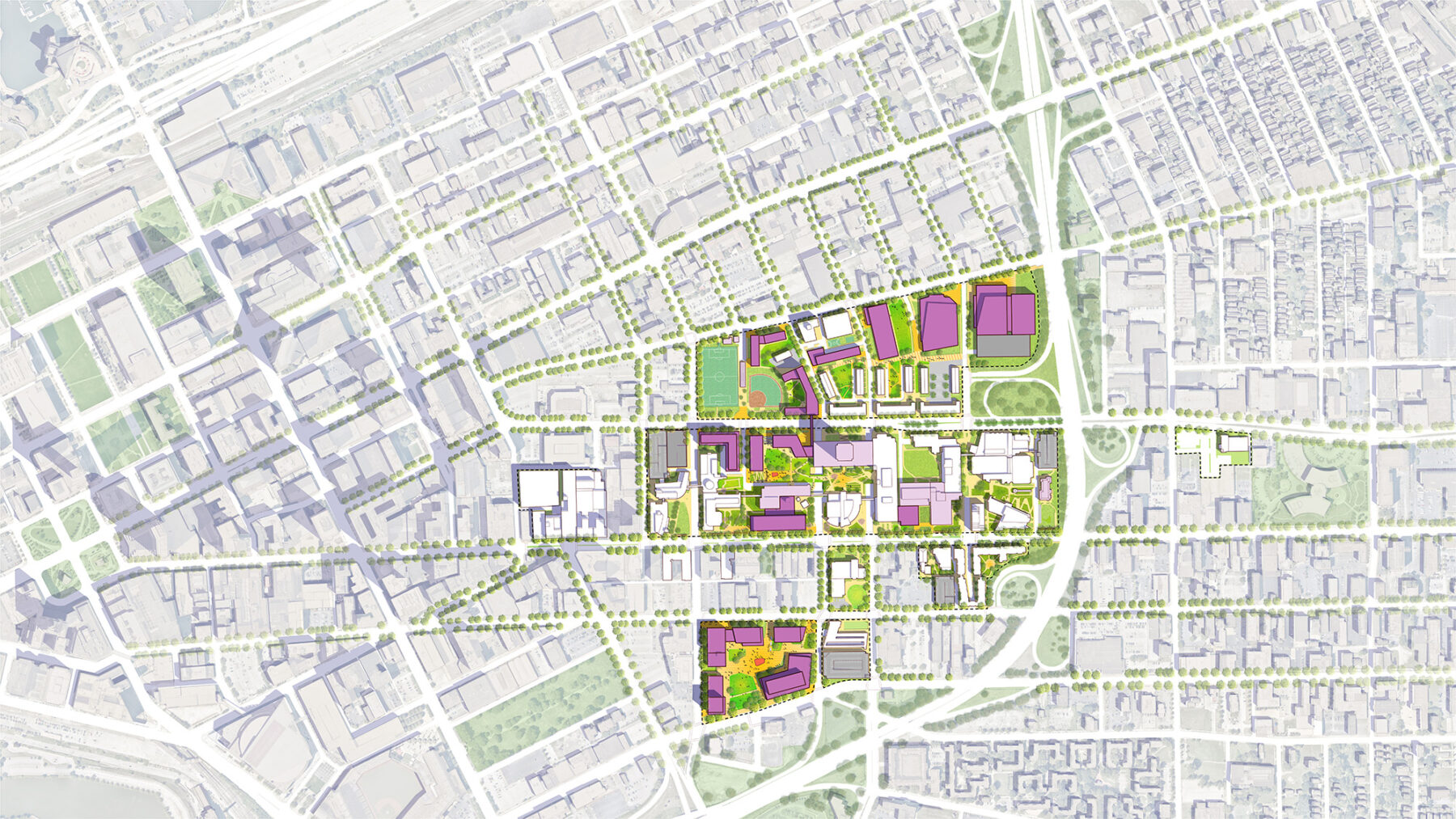
The future campus vision is grounded in its physical context within Downtown Cleveland.
The plan is rooted in the following four pillars to serve as the foundation and pathway toward achieving academic excellence and justice: Equity, Diversity, Inclusion, and Sustainability.
Building on these four pillars, the plan puts forth a series of guiding principles to provide strategic direction on the implementation of the overall campus vision. These principles include serving a campus for all, acting as an economic engine, leveraging the assets of the city context, being a model for environmental and economic sustainability, and establishing a flexible campus development framework.
CSU’s status as a public urban research institution is at the core of its identity and academic mission. Similar to other research institutions, CSU serves a diverse and large population that is deeply invested in its surrounding urban context and future wellbeing. The master plan aims to reflect this identity in the physical campus as environments evolve, traditional boundaries blur, and the institution strives to integrate the surrounding community and leverage the assets of a city context.
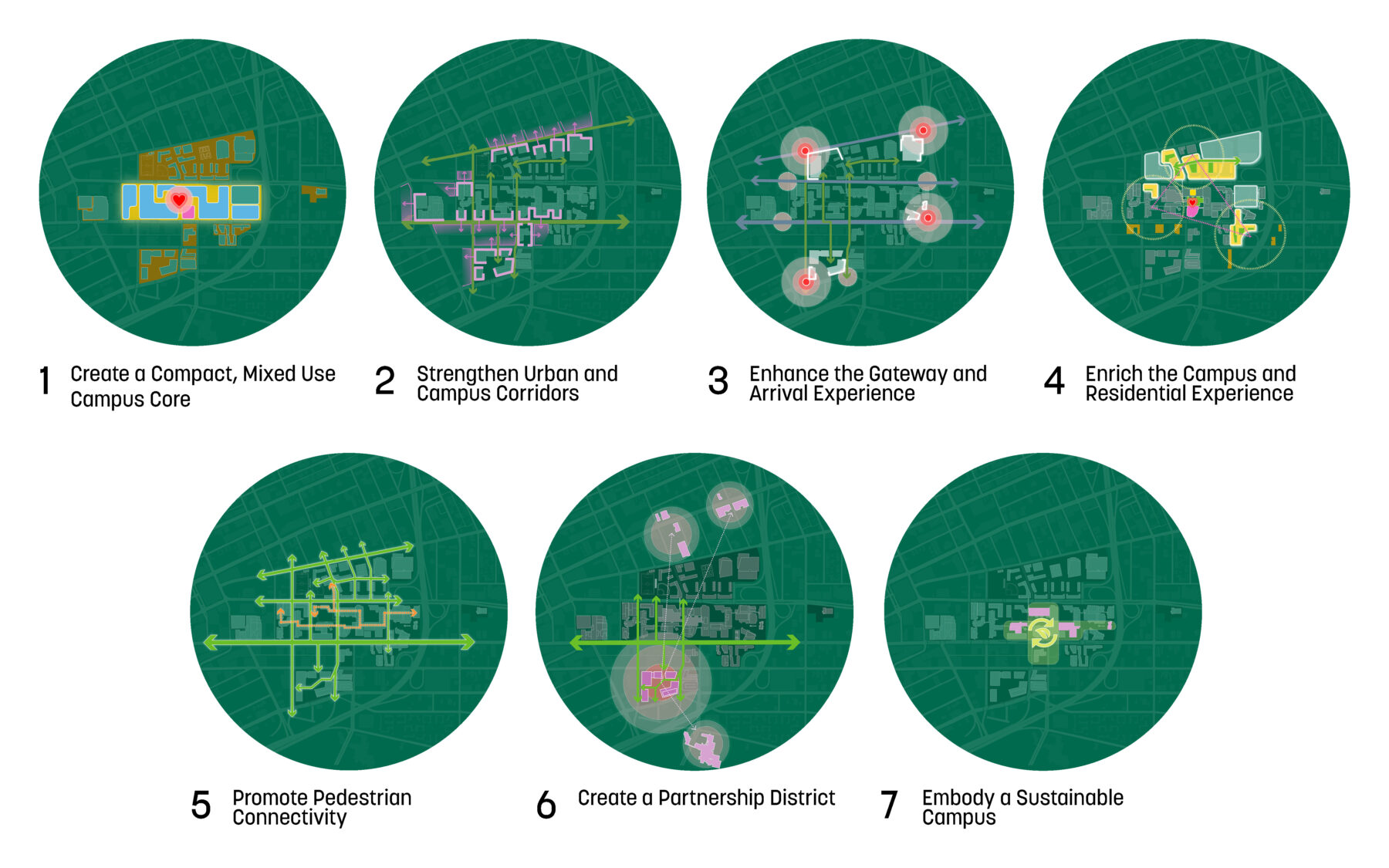
The Plan is driven by seven long-term mission-oriented framework strategies that serve as a physical manifestation of the overarching guiding principles.
1. Create a Compact, Mixed Use Campus Core
The Plan will reinforce and strengthen the existing campus core between Euclid and Chester avenues by increasing density and adding a mix of academic, research, residential, and student life uses.
2. Strengthen Urban and Campus Corridors
The Plan will strategically promote active urban edges that engage both the campus community and the broader Cleveland community, as well as strengthen key corridors connecting to adjacent assets such as Lake Erie.
3. Enhance the Gateway and Arrival Experience
The Plan will identify clear gateways welcoming visitors, daily users, and neighbors to CSU to enhance the overall campus identity and arrival experience.
4. Enrich the Campus and Residential Experience
The Plan will expand the on-campus residential experience north of Chester Avenue building on The Langston’s presence to create a residential/athletics district in close proximity to the campus core. This district will be anchored on one end by a new mixed use arena, replacing the existing Wolstein Center, and allow for a consolidated athletics district.
5. Promote Pedestrian Connectivity
The Plan will embrace CSU’s walkable urban context and enhance both internal and external pedestrian connections through streetscape and other public realm improvements.
6. Create a Partnership District
The Plan will create programmatic opportunities and physical space to reinforce existing local partnerships and forge and house new external partnerships in an emerging part of Downtown Cleveland adjacent to the campus core.
7. Embody a Sustainable Campus through Capital Renewal
The Plan will identify key areas on campus for reinvestment and renewal to address new and ongoing capital needs while balancing with the demands for new space associated with future campus growth.
In addition to the seven framework strategies, the new master plan identifies several district projects and recommendations critical to carrying out the campus vision. These recommendations focus on the development of existing and new residential, athletic, and academic cores, as well as a new partnerships district.
By increasing the residential population and consolidating recreational amenities, the plan will establish a new thriving athletics destination on campus. This district will include three new residential buildings, an east/west pedestrian spine unifying this area, a new fieldhouse, and a large multi-purpose arena. The arena will create an opportunity for a new campus gateway in the northeast and the opportunity to strengthen Payne Avenue as an urban corridor.
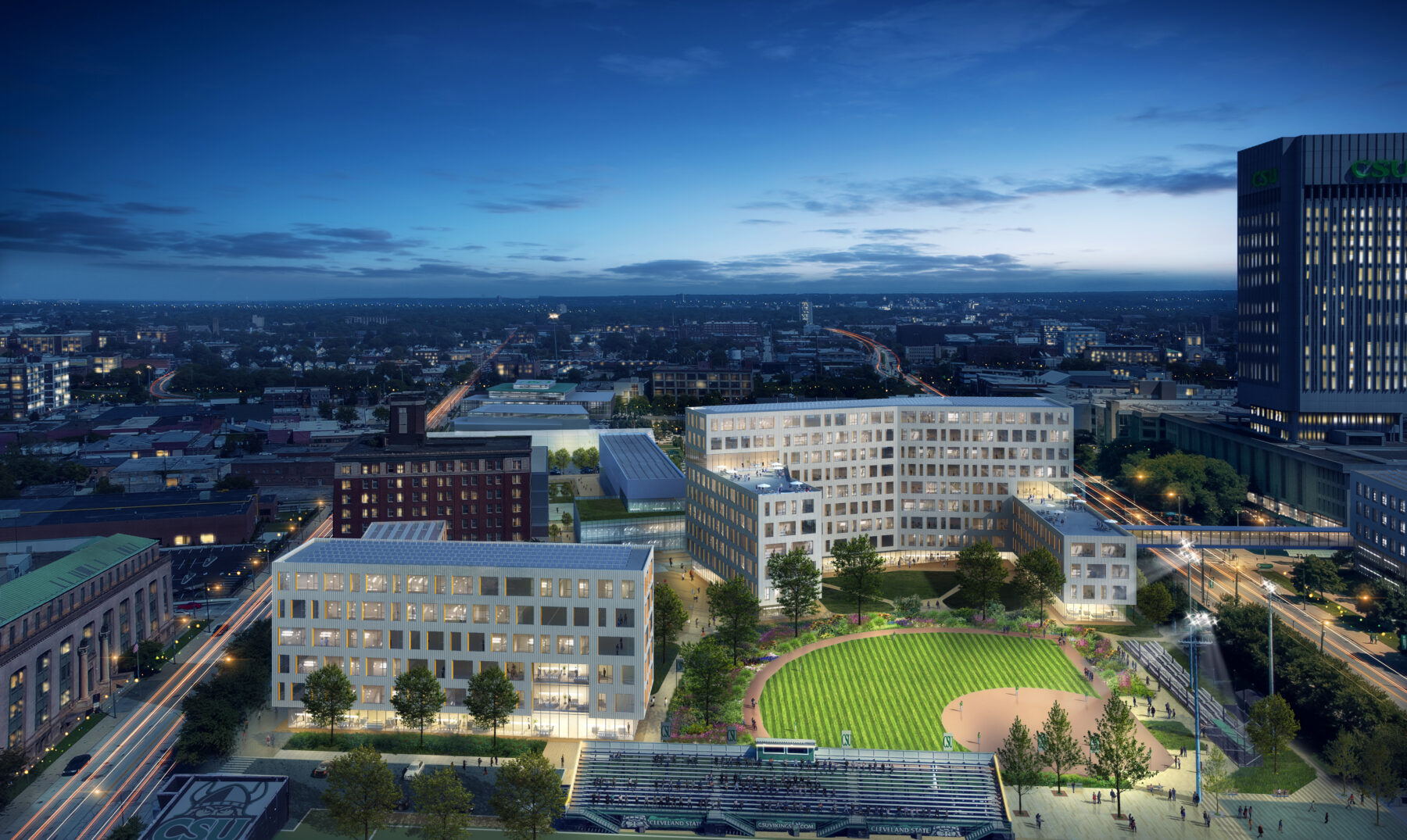
View of the Residential/Athletics District looking east with new residential construction in the forefront.
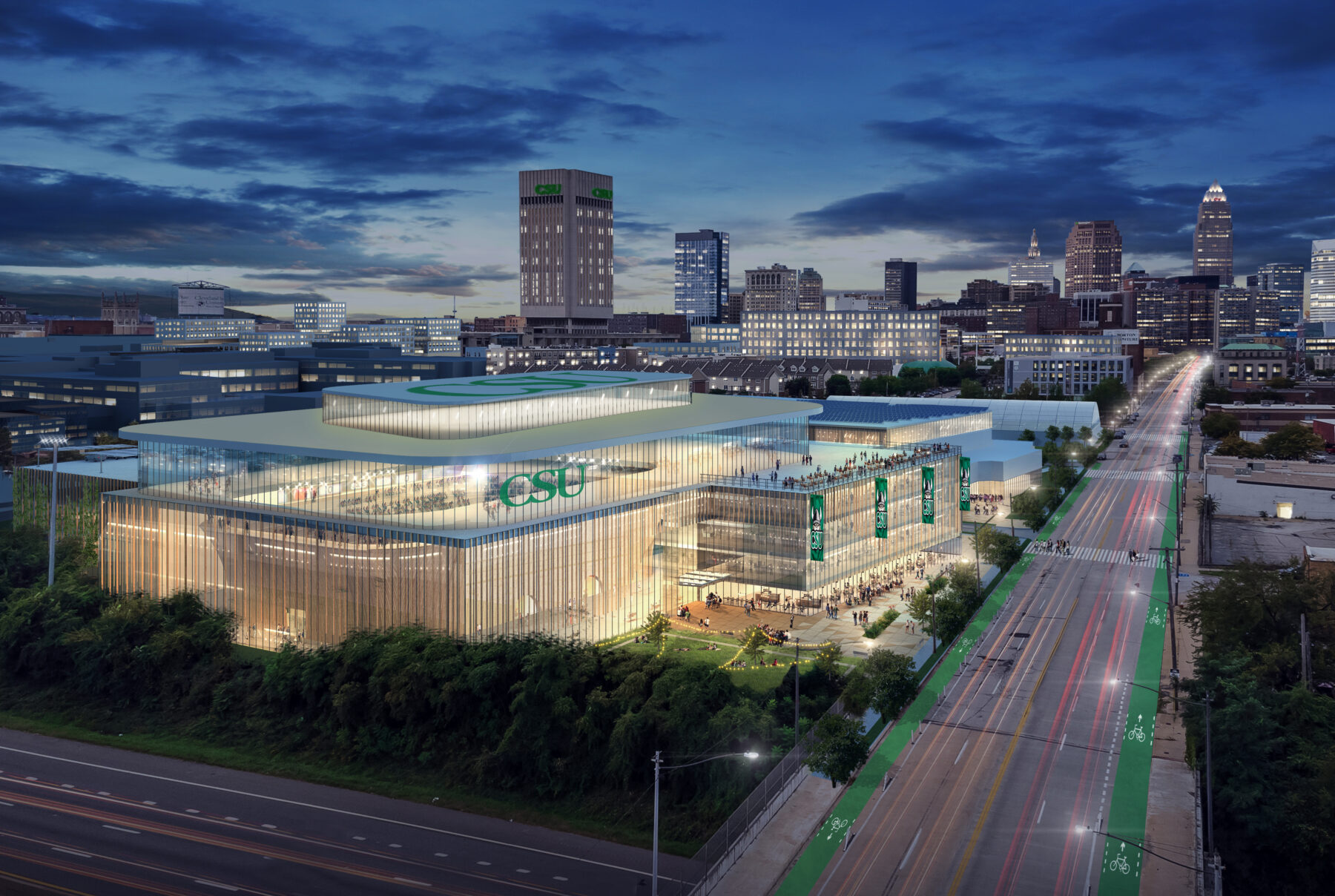
The new multipurpose arena will anchor the Residential/Athletics District on the campus’ eastern edge and serve the needs of both the university and the city.
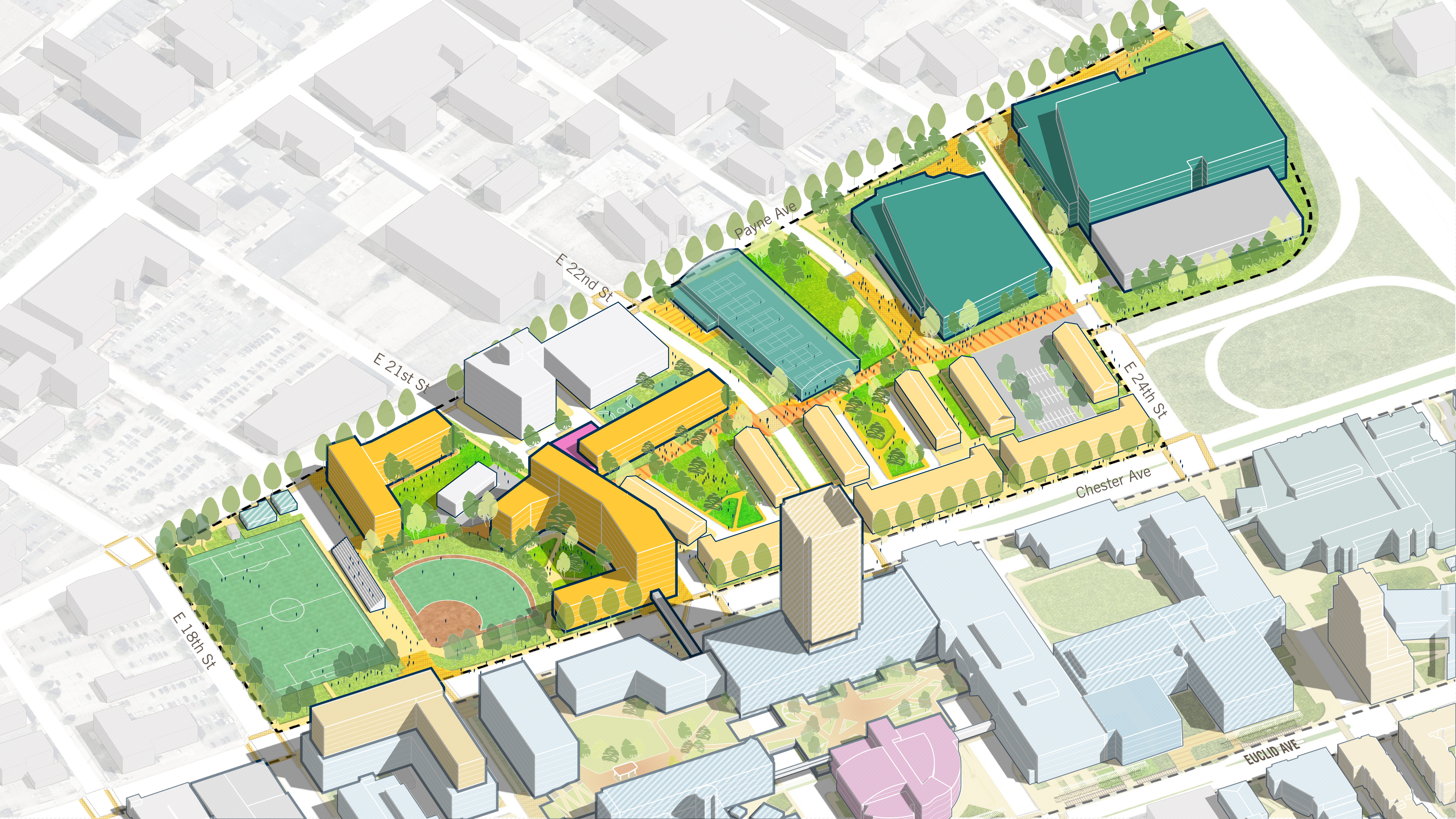
The Residential/Athletics District will include new residential, athletics, and recreational uses north of the academic core.
The academic core will be characterized by the introduction of both academic and residential buildings that will concentrate and reinforce the urban corridor edges of Euclid and Chester avenues. By establishing these avenues as major campus corridors, key investments in the public realm will enhance the overall sense of place on campus and promote stronger east/west campus connections.
Several catalytic projects include a new academic quad located on the existing Central Garage connecting the Student Center Plaza, a new building focused on workforce development, and both residential and student life renovation plans for the iconic Rhodes Tower. These renovations will activate the campus core and further establish it as a true academic and social hub for Cleveland State University.
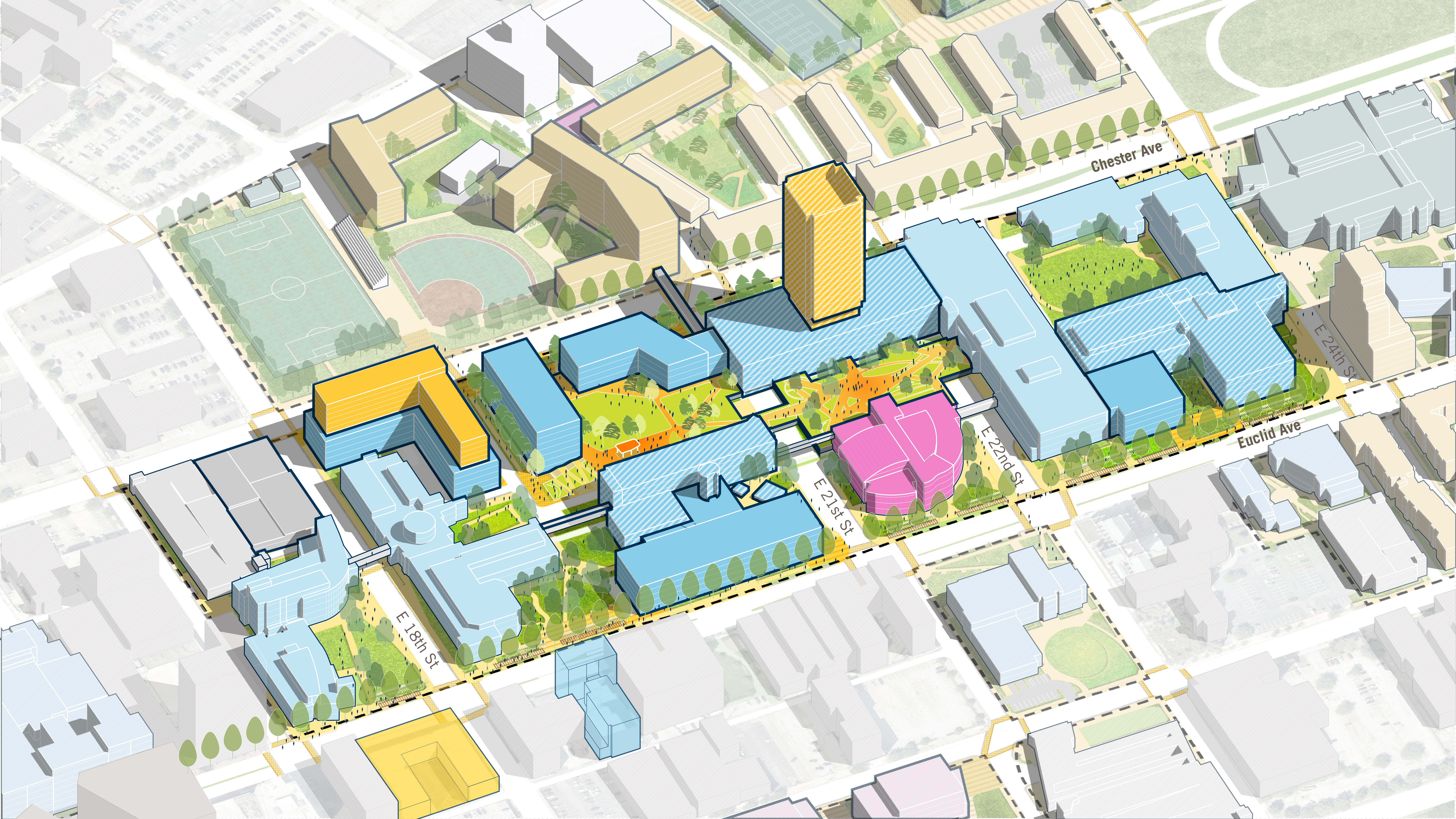
The new academic and student life buildings will densify the core and reinforce the urban corridor edges of Euclid and Chester Avenues.
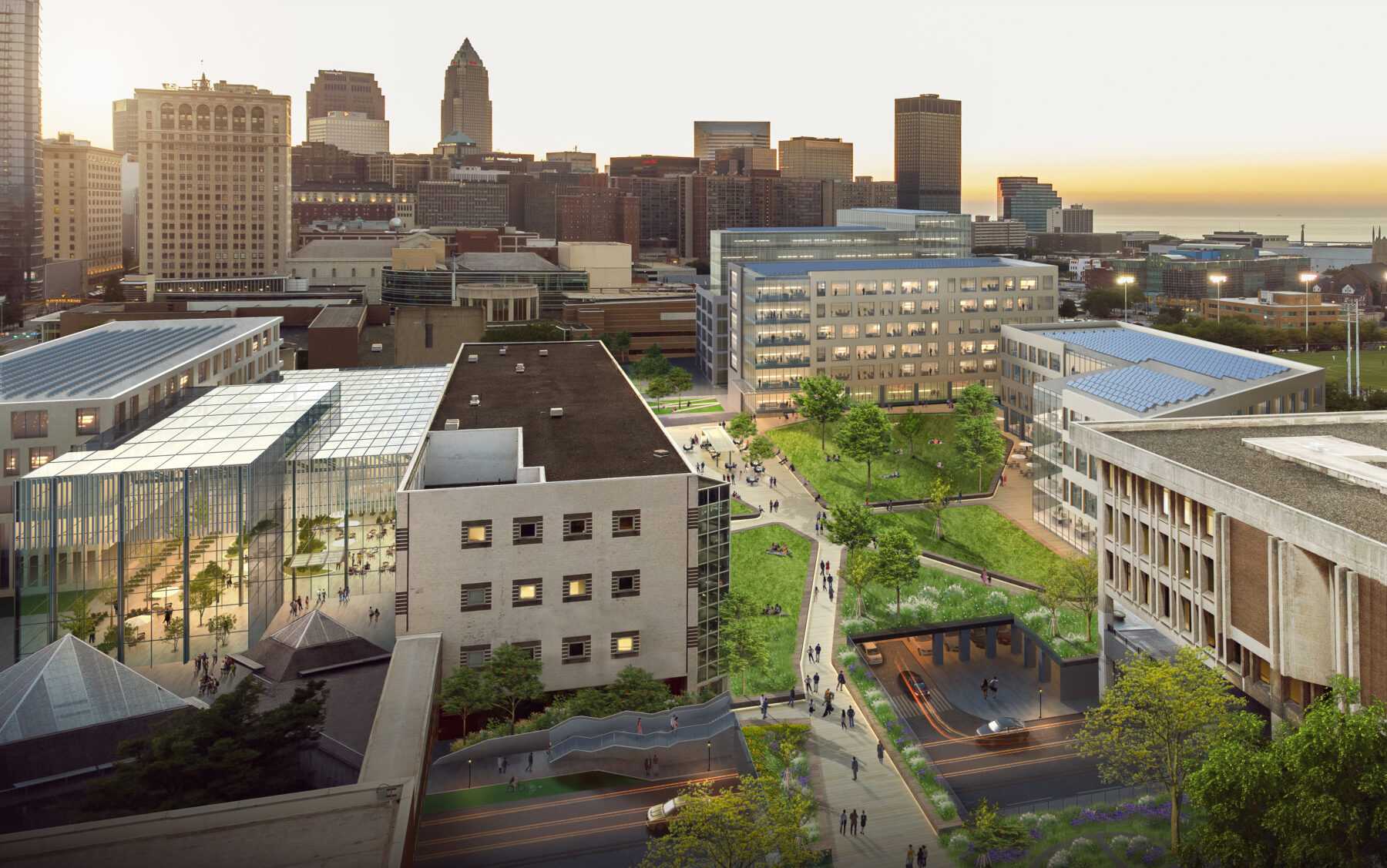
Surrounded on three sides by academic buildings, the academic quad will enhance east/west connectivity on campus and provide the western end of the campus core with accessible open space.
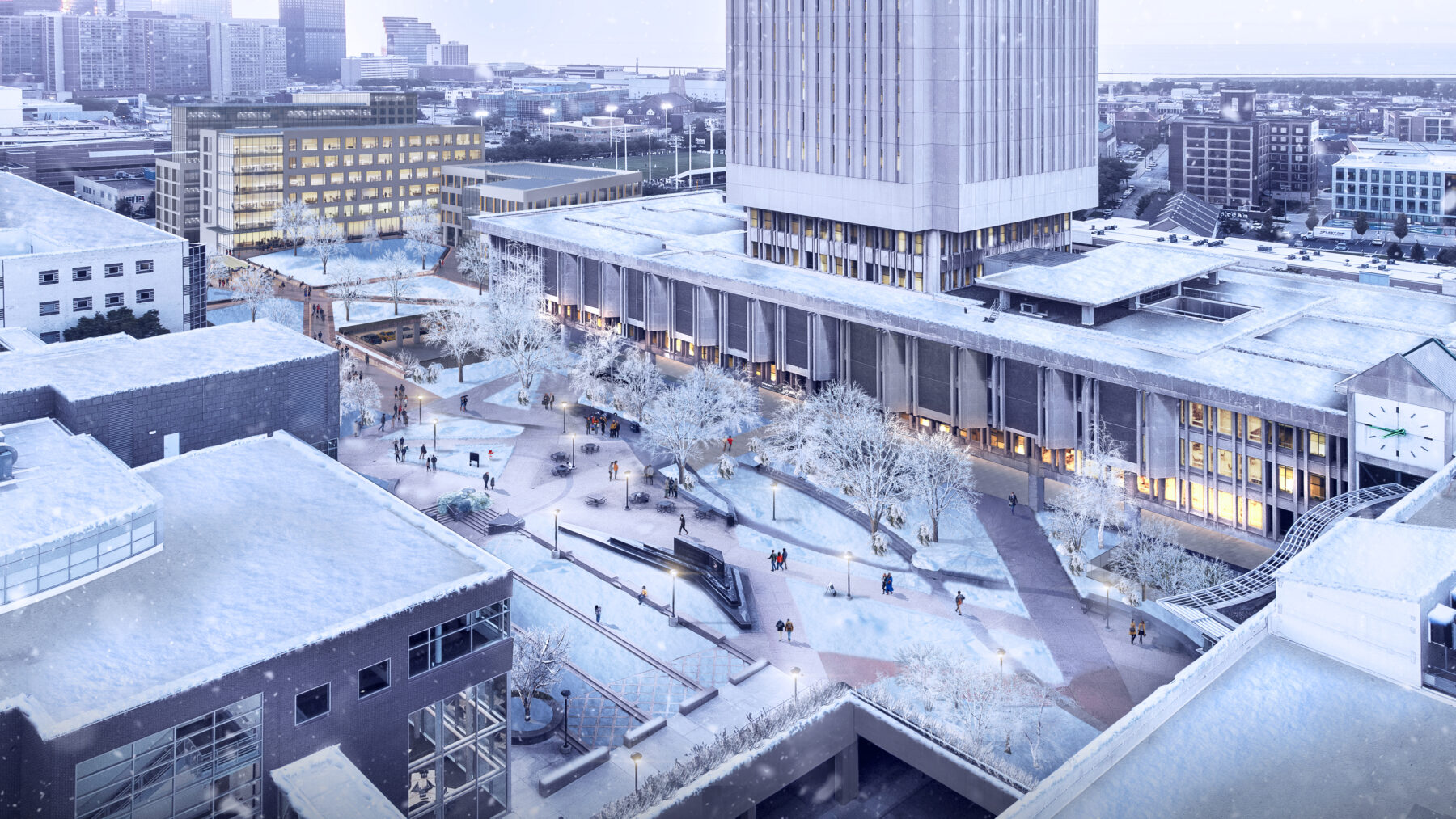
The Plan considers ways in which to activate the campus throughout the calendar year.

Renovating Rhodes Tower with primarily residential and student life uses and an outdoor social terrace will activate this area of the academic core.
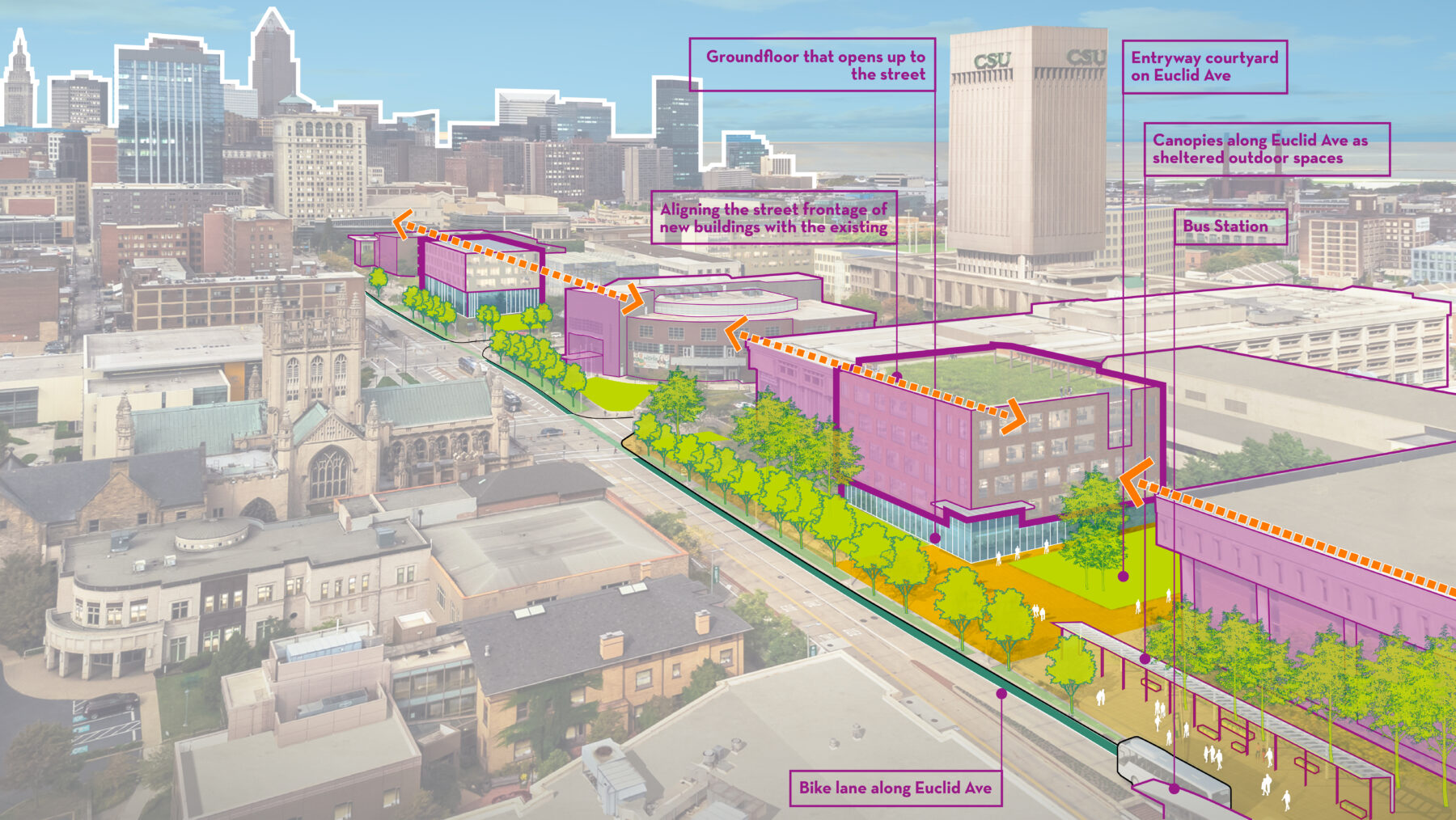
The Corporate Connector will serve as a new workforce development building on Euclid Avenue and an opportunity to better unify the public realm along this significant urban corridor.
The existing Wolstein Arena will serve as the future home for the university’s partnership district, providing a space adjacent to both the campus core and Downtown Cleveland for external collaborations. This district will actively advance the university’s research goals while complementing the mixed-use academic districts in the surrounding Cleveland area. While the design and program remain flexible to reflect future potential partner needs, the district buildings will be structured around a central open space to promote a strong district identity, sense of community, and opportunities for interdisciplinary collaboration with strong physical connections back to E 21st Street and the campus core.
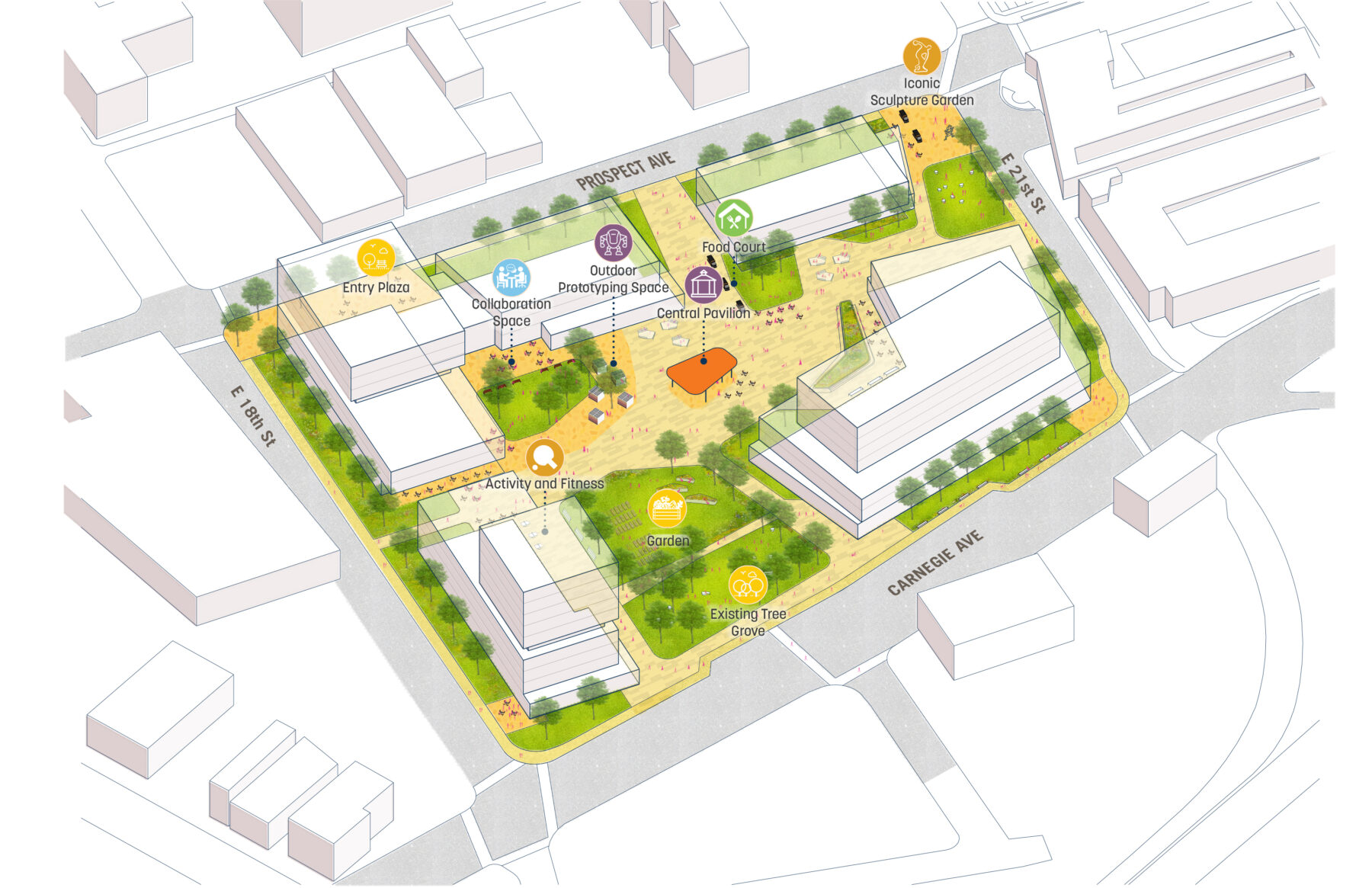
While the program and design of the Partnership District will remain flexible, the plan advocates for a central open space and strong physical connection back to the campus core.
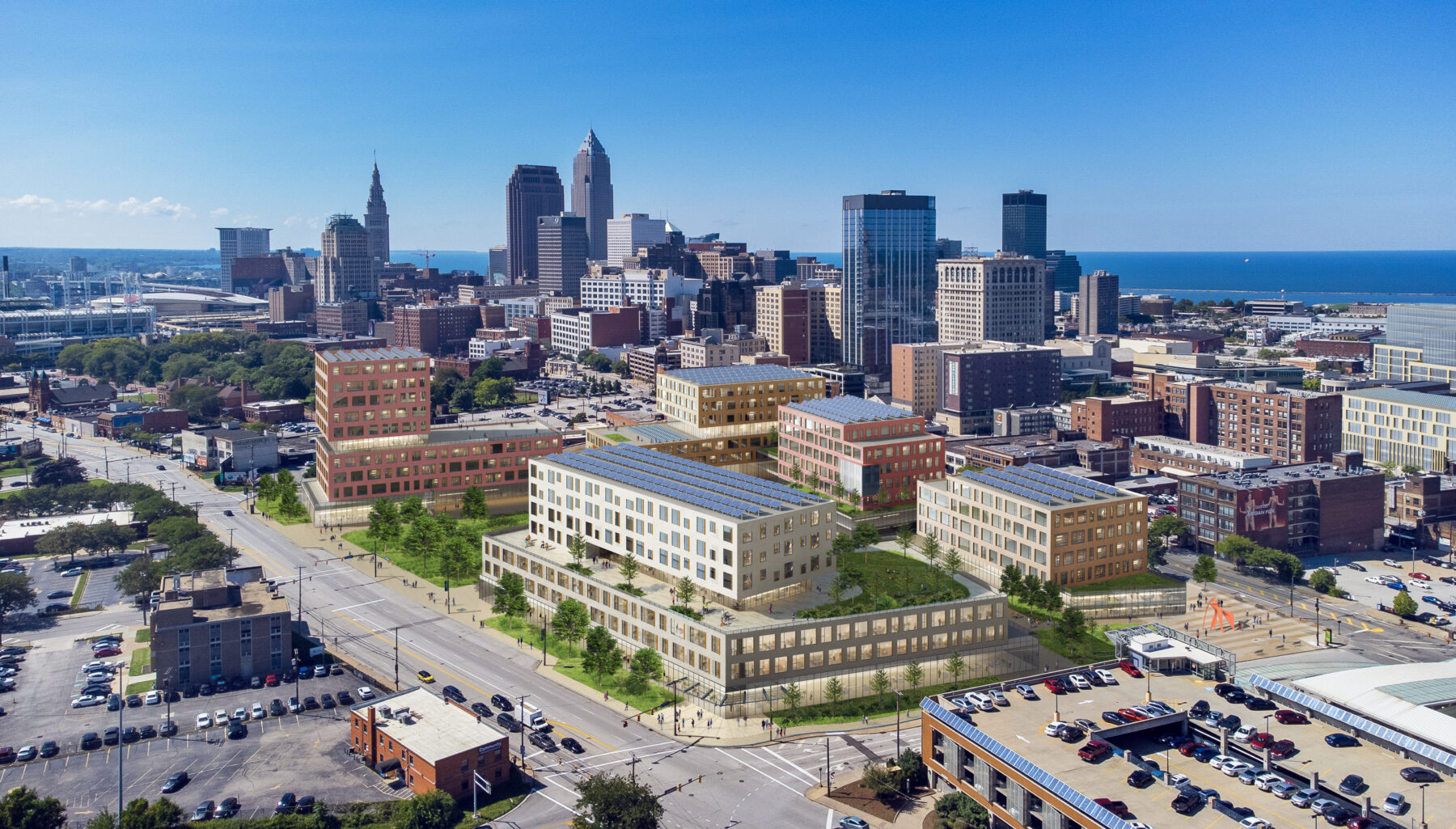
The Partnership District, located on the site of the existing Wolstein Arena, will provide space adjacent to the campus core and Downtown Cleveland for external collaborations.
For more information contact Margit Liander.